If you’re regretting that decision of having installed Apple‘s all-new macOS 12 Monterey to check out the new features but instead ended up experiencing only bugs rather than any features, and are now breaking your head on how to downgrade back to macOS Big Sur, then this is the article for you.
Here is a step-by-step walkthrough on how to switch back to macOS 11 Big Sur from macOS 12 Monterey. Keep in mind that doing so will entirely erase macOS 12 from your hard drive. So, do not forget to back up your Mac or else you will end up losing all of your files, programs, documents, and other important data.
You can use a cloud storage platform such as DropBox, iCloud, or OneDrive to save your files.
Okay, so once you conclude that, your next step will be to enable booting from external media. Especially if you are using a 2018 or newer variant of the Apple MacBook Pro, MacBook Air, or Mac mini, you will have to enable booting from external media. If you have enabled the Startup Security Utility on your Mac, ensure that you are allowed to use a bootable external drive.
- Firstly, restart your Mac
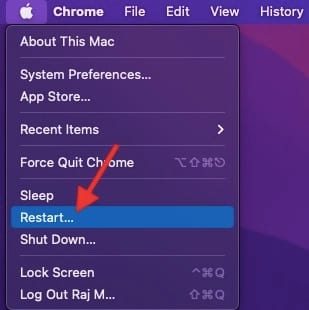
2.Now, hold down Command+R keys once the Apple logo appears on the screen. Doing this will put your Mac into Recovery Mode.
3. Next, click Utilities in the Menu Bar and choose Startup Security Utility.
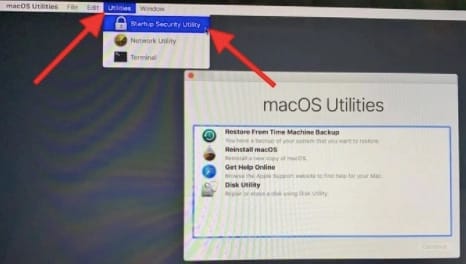
4. You’re nearly there, now you will need to enter your firmware credentials and then check the box to Allow booting from external media.
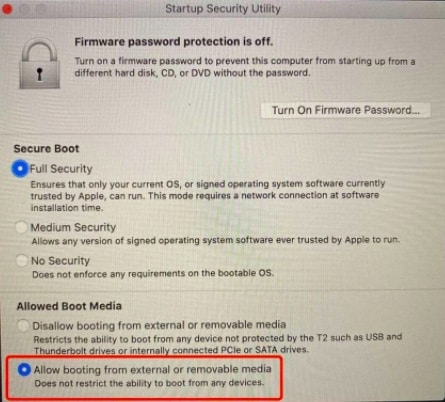
5. Create a Bootable macOS Big Sur USB Install Drive, before downgrading your Mac and erasing macOS 12, you will need to download macOS 11 from the App Store. Ensure that you have a copy of macOS Big Sur on an external hard drive for the simplest way to downgrade.
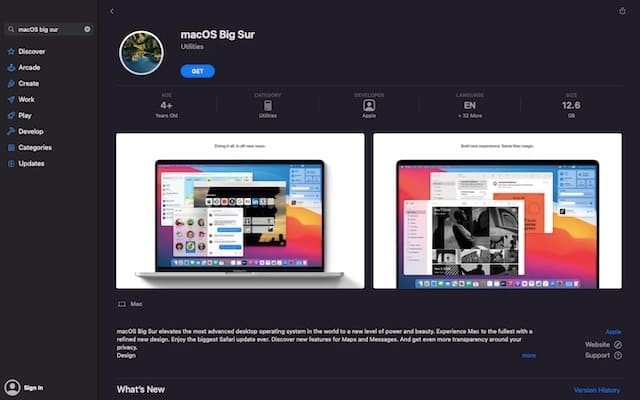
6. Erase your hard drive: You will have to erase the hard drive before reinstalling macOS Big Sur. Another friendly reminder, back up your Mac before you do this.
- To get started, ensure your Mac is connected to a stable internet connection. Proceed to click on the Apple icon in the upper-left corner and choose Restart from the drop-down menu.
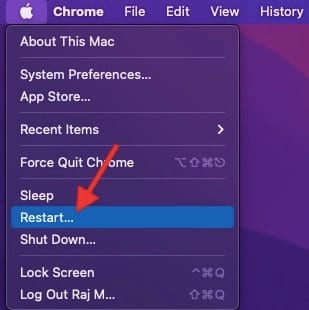
- Now, hold down Command+R keys. Make sure to hold down on the keys till your computer reboots. It will put your computer into Recovery Mode.
- Next, click on Disk Utility in the OS X Utilities selector. After that, click on Continue to move forward.
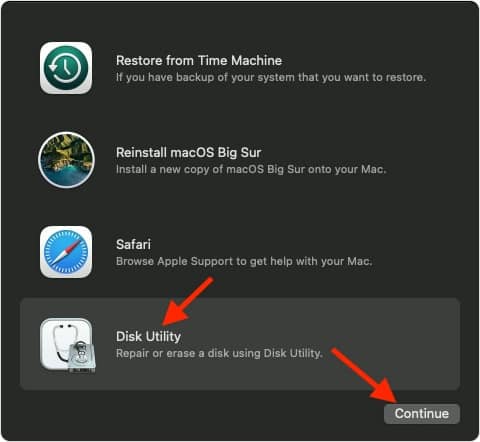
- Choose your Startup Disk and then click on the Erase button at the top of the window.
- Now, input a new name for the hard drive such as Macintosh HD. Once the drive has been erased, its name will change to the one you have chosen. If your Mac is using HFS+, make sure to choose Mac OS Extended(Journaled) from the format list. However, if your Mac is using APFS, be sure to choose APFS from the format list. If your Scheme is available, choose GUID Partition Map. Finally, click on Erase.
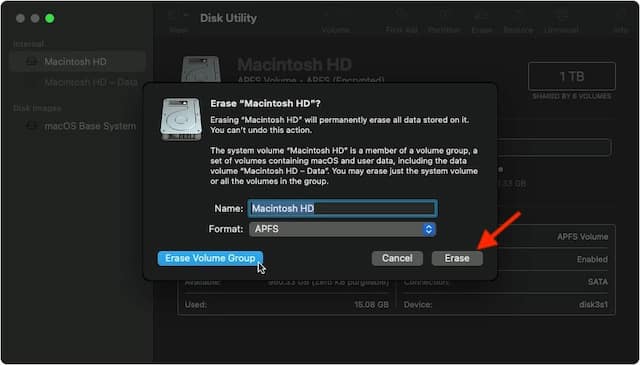
Once this process is complete, you can quit the Disk Utility from the drop-down menu in the upper-left corner of the screen to return to the OS X Utilities selector.
Reinstall macOS Big Sur on Macs that came with macOS Big Sur Preinstalled:
If your device came with macOS Big Sur pre-installed, then hold on to the Shift+Option+Command+R combo to enter Internet Recovery Mode and then install macOS 11.
Reinstalling macOS Big Sur on Macs that did not come with macOS Big Sur:
If your device did not come with macOS Big Sur, follow these steps:
- Make sure your Mac is connected to the internet. Now, plug in the bootable hard drive into your Mac. Now, click on the Apple menu in the top-left corner of the screen and choose Restart from the drop-down menu.
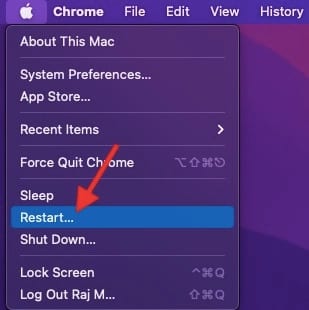
2. Now, hold onto the Option/alt key while your computer restarts(keep pressing the Option Key till the Apple logo disappears after rebooting).
3.Next, you will get an option to select a startup disk. Choose your bootable USB drive with macOS Big Sur from the list of startup disk options.
4. Now, click on Continue in the installation window.
macOS Big Sur will install similar to a standard update. You will need to agree to the licensing terms before the software reboots on your Mac.
Restore Settings from Time Machine Backup
Using a recent backup of your Mac saved to Time Machine, you can bring back the saved settings with ease. Follow the steps below to restore a recent Time Machine backup after you downgrade from macOS 12 Monterey to macOS Big Sur.
- Ensure that your Mac is connected to a stable internet connection, after that click on the Apple menu at the top left corner of the screen and opt for Restart
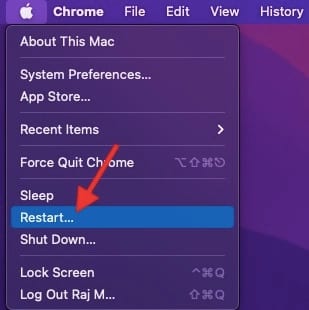
2. Now, hold down the Command+R keys as soon as you hear the startup chime. Hold the keys down till the computer reboots.
3. Next, choose Restore from Time Machine Backup in the OS X Utilities selector and click on Continue.
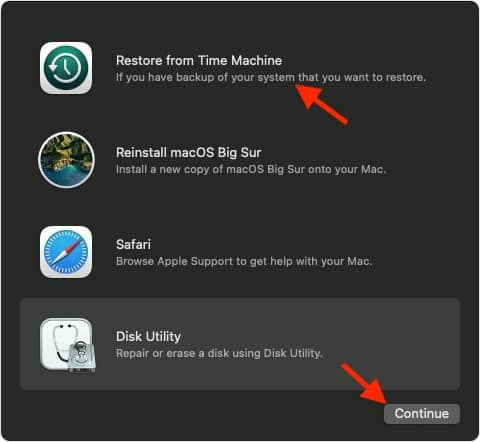
4. Next, click on Continue again. Then, choose the Backup source for where your Time Machine Backup is stored.
5. Now, click on Continue and then choose the most recent macOS Big Sur backup on the drive. After that, click on Continue.
And that should do it! Your Mac will now start restoring from the Time Machine backup and then reboot. As the whole process will take a while, you will need to be patient.
Beta versions of softwares usually come with bugs and unexpected issues which is why it is probably a good choice to install them on a secondary device.
Also read:
- Intel’s Core i9-11900KB appears in the first-ever benchmark online
- Microsoft expresses its complete support to SpaceX’s Starlink against terrestrial network providers
- New images of Intel’s next-gen Sapphire Rapids Xeon CPU dies leaked
- Lenovo IdeaPad Flex 5 with AMD Ryzen 7 5700U now available for ₹ 69,990




